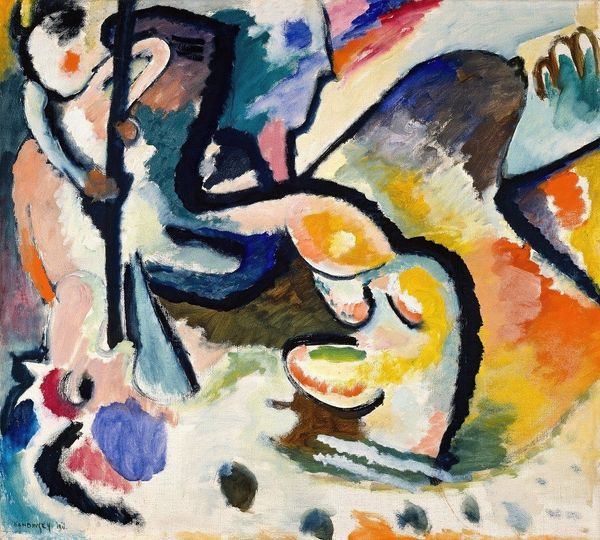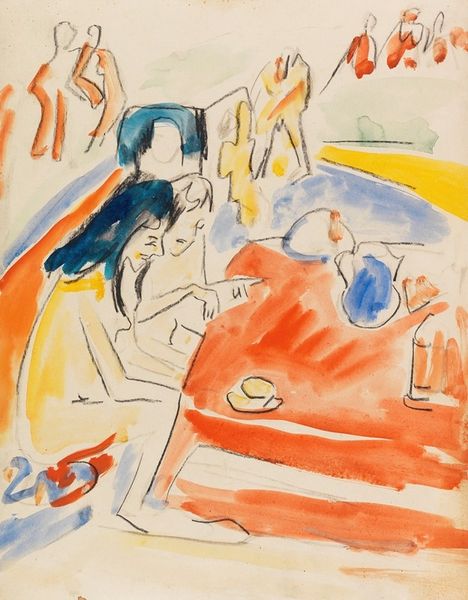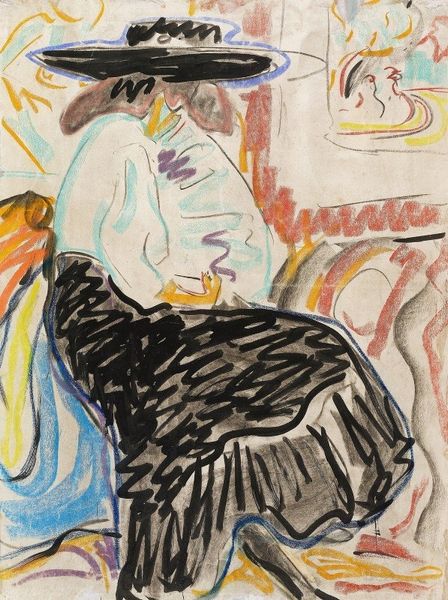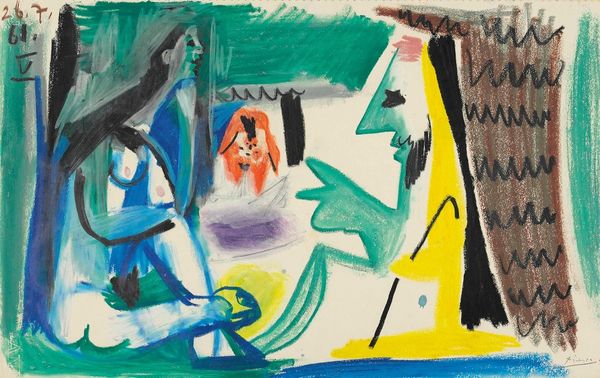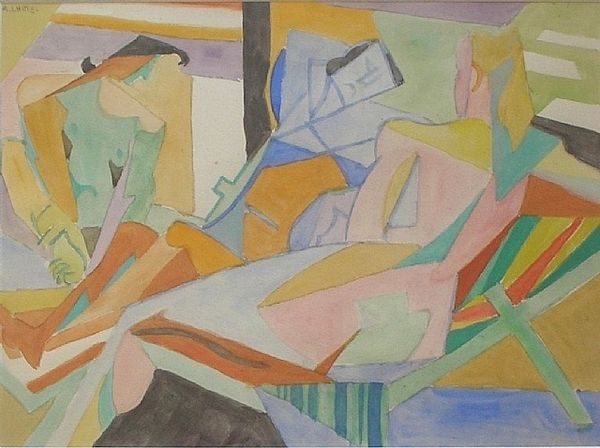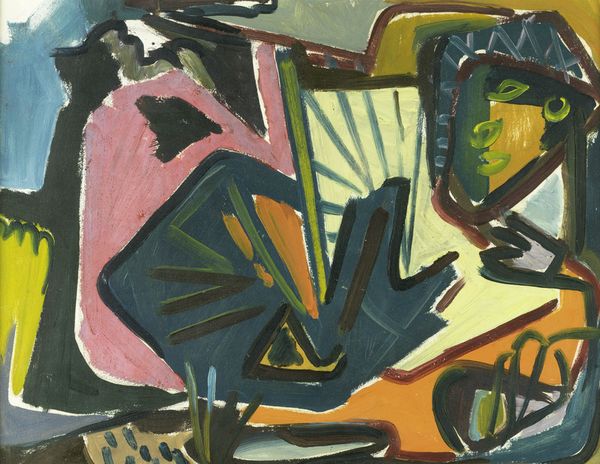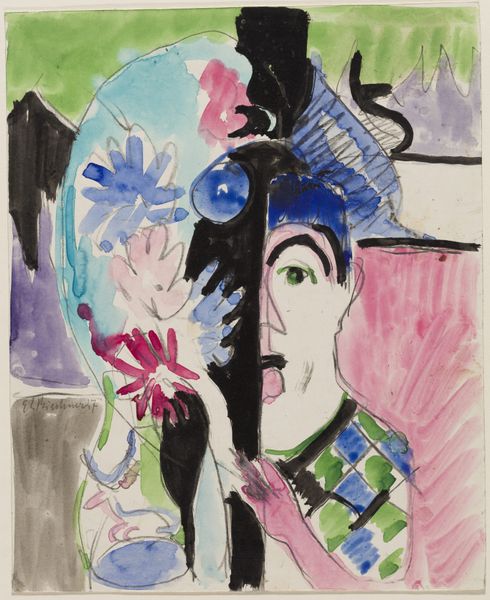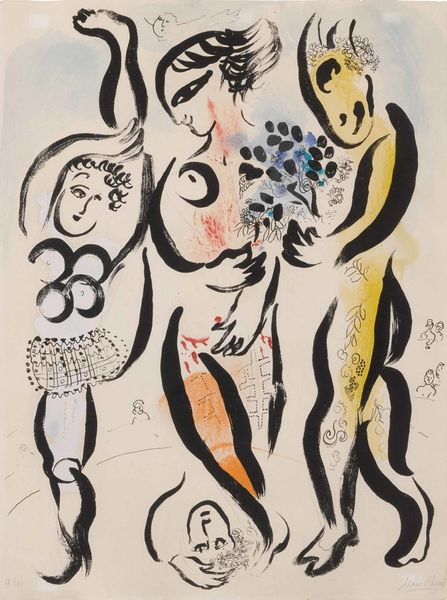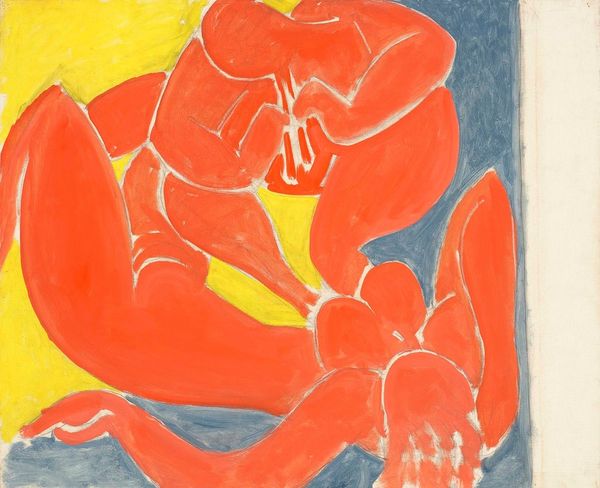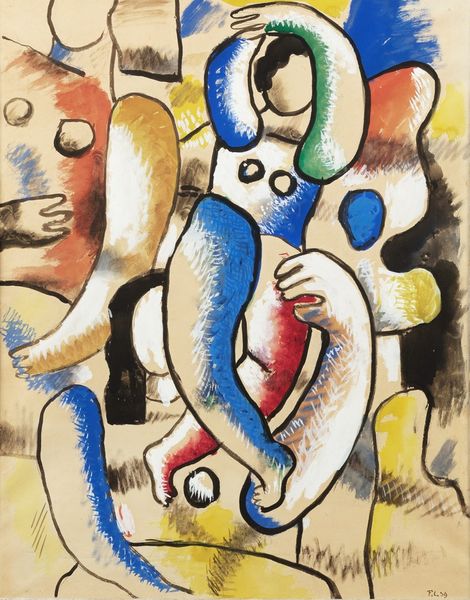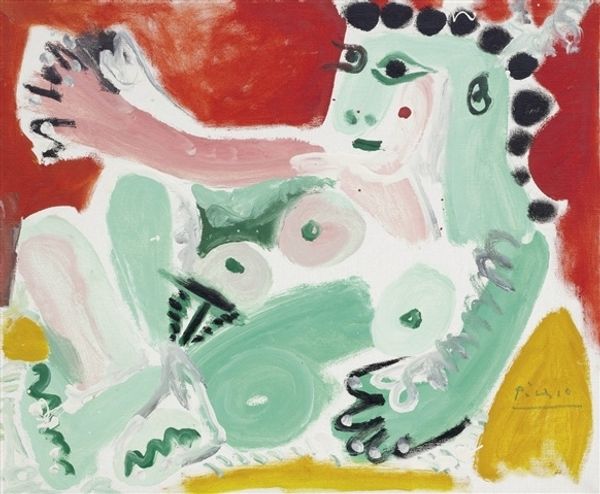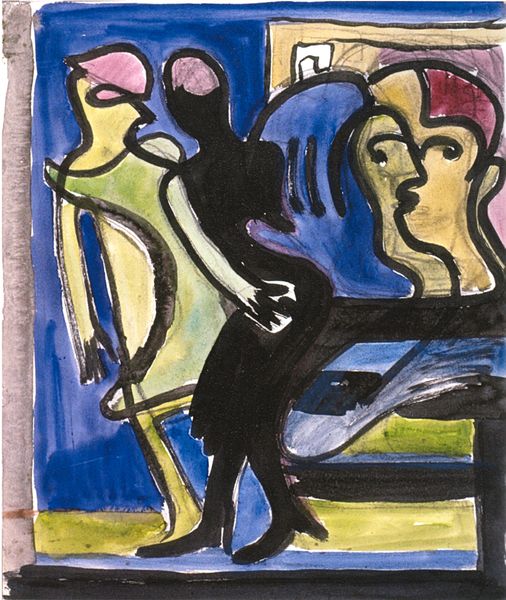
Copyright: Public Domain: Artvee
Editor: This is Henry Lyman Saÿen's "Calligraphic #2 Woman on Chair," created sometime between 1914 and 1918, done in watercolor. The colours are quite striking and the composition…fragmented. What do you see in this piece? Curator: I see a work deeply engaged with the dismantling of traditional representation. Painted during a period of intense social upheaval, we have to ask ourselves, how does this deconstruction mirror broader challenges to societal norms, especially those impacting women? Editor: So you’re saying the abstract forms have social implications? Curator: Absolutely. Consider the Fauvist influence: the bold colors, divorced from realism, scream liberation from academic constraint. Now think about how women were simultaneously fighting for suffrage and greater autonomy. Isn't this distorted form a visual analogue for the ways women's bodies and identities were being reimagined, reclaimed? Where do you see signs of that potential reclaiming? Editor: I guess… the figure is central. And there is something assertive about the blocky, bold colours he uses for the skirt and arms. It almost feels confrontational. Curator: Precisely. The vibrant colors push back against the objectification that characterized so much of the traditional portraiture of women. This painting is a testament to the era’s radical rethinking of identity and representation. How does that understanding change your initial response to the work? Editor: It makes me think about the agency of the sitter. Maybe she isn't just a model, but a participant in this artistic revolution. Curator: Exactly. And that shift in perspective is crucial to understanding the piece within its historical and social context. Editor: Thanks! I definitely look at it differently now, with an eye toward the artist commenting on shifting identities. Curator: Indeed, viewing it as a Fauvist statement on female empowerment helps connect the art to crucial historical narratives.
Comments
No comments
Be the first to comment and join the conversation on the ultimate creative platform.
